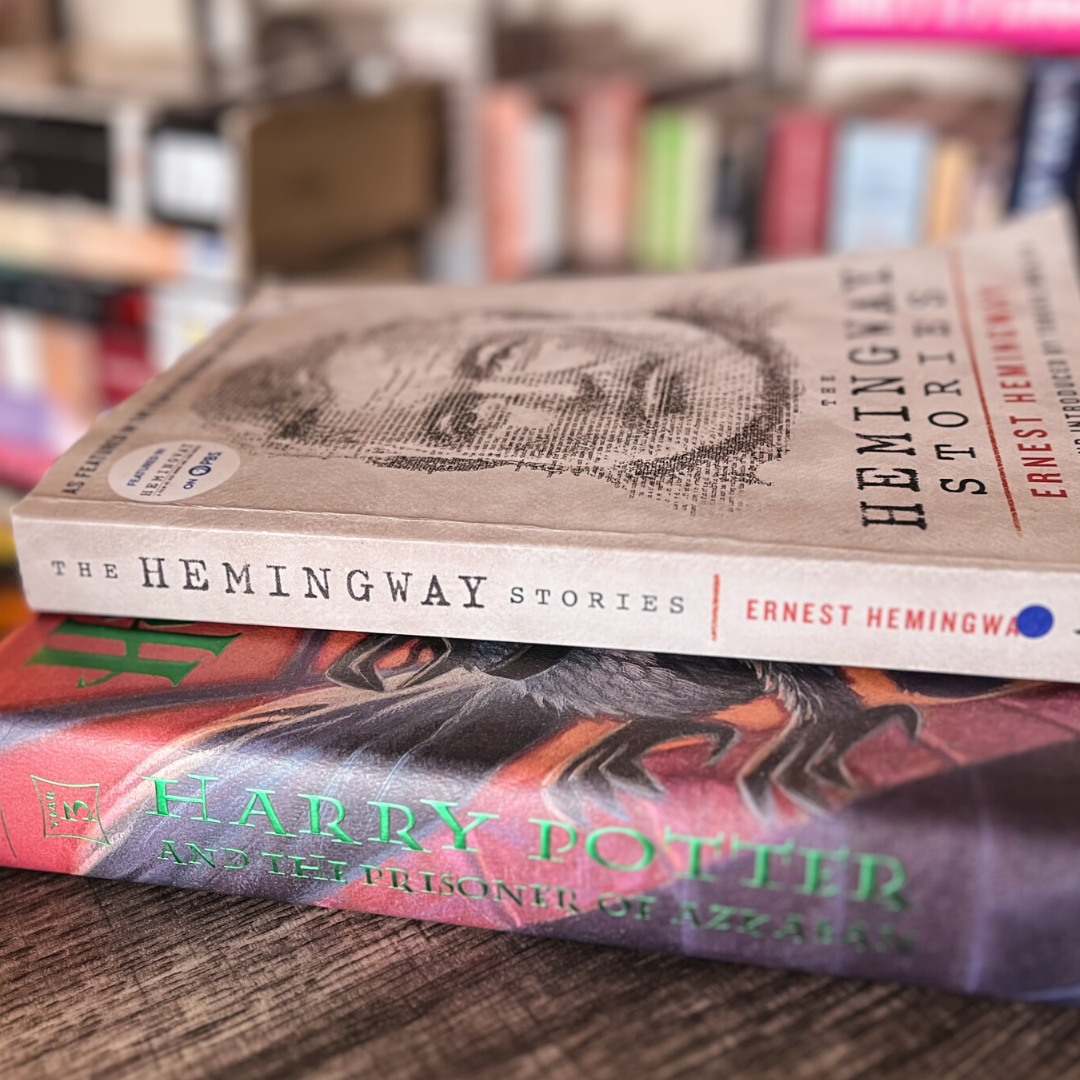How to Write in Past Tense: A Guide for Writers
Do you have a story idea that you can’t wait to share with the world, but don’t know which tense is right for your book? Don’t worry. I’ve put together an entire series so you can find the right fit for your story. Let’s start by examining how to write in past tense.
Disclaimer: This post may include affiliate links. If you purchase through my link, I will receive a small commission at no additional cost to you. See my full disclosure policy, here.
Fiction is most commonly written in the past tense. It’s typically paired with a 3rd person point-of-view; we’ll get to POV in another post. Let’s look at some of these past tense technique’s fiction writers can apply to their book.
Story examples:
3rd Person POV - Lord of the Rings, Dune, Harry Potter, The Old Man and the Sea, Where the Crawdads Sing, Other Birds.
1st Person POV - The Great Gatsby, ACOTAR.
You get the idea.
Past tense narration is most common because it’s how we naturally relay events to others in reality, therefore, it became a standard for storytelling. While present tense stories have lately been popular in the modern day, the number of books written in the past tense still surpasses them. Let’s explore why.
Writing in the past tense gives an author more flexibility in how to story is untold, they and can travel through time without jarring a reader. Past tense allows a writer to craft non-linear stories, and books that seamlessly insert flashbacks.
These books are great examples of fiction writing in the past tense. Read these books, study the tense as you do so: Harry Potter and the Prisoner of Azkaban and Ernest Hemingway’s short story collection.
Books to learn past tense with: Harry Potter and the Prisoner of Azkaban by J.K. Rowling, published by Scholastic; First Edition (October 1999) & The Hemingway Stories by Ernest Hemingway, published by Scribner (March 2021).
Let’s start with the basics.
What is most crucial to understanding how to write in the past tense?
The verb.
As a writer, you need to understand regular and irregular verbs. Studying the craft helps you write professional and compelling books that will keep your reader hooked from start to finish. It can also make the difference in cost when you need an editor and make or break you achieving that book deal. So, what are these verbs?
Regular verbs end in -ed
Irregular verbs are your past simple and past participle verbs.
Here’s an example of a regular verb written in the past tense.
Jessie consumed the entire tub of ice cream after her break-up with Tony.
Regular verbs in this sentence: consumed
Here’s another:
Sean was displeased with Tim. He wanted to know why they couldn’t just split the money—after all, they were in this together, right?
But wait… why are the other verbs that are written in the present tense? was, couldn’t
Those my fellow writers are called, irregular past tense verbs. They are either be past simple or past participle verbs.
Irregular verbs are actions that don’t end in -ed. Those verbs include was, lost, sung, and plenty more.
Why do we see verbs that look like the present tense within the same sentence?
This my fellow writer is called past progressive.
You may notice a sentence like this:
Shay was hiding behind the tree.
The past progressive verbs shown in the sentence above are these: was and hiding. When you write a sentence like this, you’re using the verb was to signify the action already happened. The second verb hiding gets the -ing signifies the continuous action of the verb in the past.
This little trick is because of time. You are relaying a character’s actions that occurred in the past chronologically. However, within that past moment, the subject continued the second action verb. It’s still past tense. It’s simply the timeline of actions within the past.
I hope I didn’t lose you there.
Review this sentence, then, comment below if you can spot the difference of these past tense verbs.
Mariah was reading when a loud crash banged against the wall. The book fell. She crept to the door to find the source.
Let’s examine the pros and cons of writing in past tense.
Pros: The author can reveal more character’s perspectives, and the story can unfold non-linearly.
Cons: Writers easily fall into crafting sentences using passive voice. Be aware! You always want to use an active voice in narrative.
Past Perfect tense
It’s not over yet. Now that you’ve nailed down the basics of past tense, let’s get into past perfect tense.
Past Simple: Writing about an action that happened in the past, this is what we covered above.
Ex: She ate the roast.
Let’s take it a step further by understanding past perfect tense.
Past Perfect: Writing about a past action that happened before another past action.
Ex: She had eaten the roast.
Past Perfect also includes Perfect Progressive past tense.
EX: She had been eating the roast…
Hemingway nails this tense form in his collection of short stories.
Stay consistent throughout the book with tense choice
Sometimes these varying past tense verbs are used within the same book. This is perfectly fine, and often unavoidable. You can mix all of these past tense formulas: the key is consistency. If you choose to write in the past tense for the novel, stick to it.
Whichever tense you choose to go with, ensure that you’re remaining true to the story; sometimes stories choose their tense without our input – follow your intuition.
I’ll say it again: The most important element of writing in past tense– or any tense, is to remember to remain consistent. It easy to alternate while writing. Don’t do it.
If you are switching tenses, which most often happens in present tense stories while they relay flashback scenes for thematic significance, ensure you’re making the switch clear to your reader. Make these alternations seamless by adding a dash, a dinkus (***), or graphics. If you want to know more, read the next piece.
Quick review of how to write in the past tense.
Past simple
Adding -ed to your verbs.
Past progressive (past continuous)
Adding -ing to your verbs when a characters actions within the past were continuous.
Past perfect
Adding (had before the second verb) - An action that was completed before another action.
Remember: writing is moving forward word by word.
I hope these tips on writing in past tense for fiction writers are helpful, let me know in the comments below!


